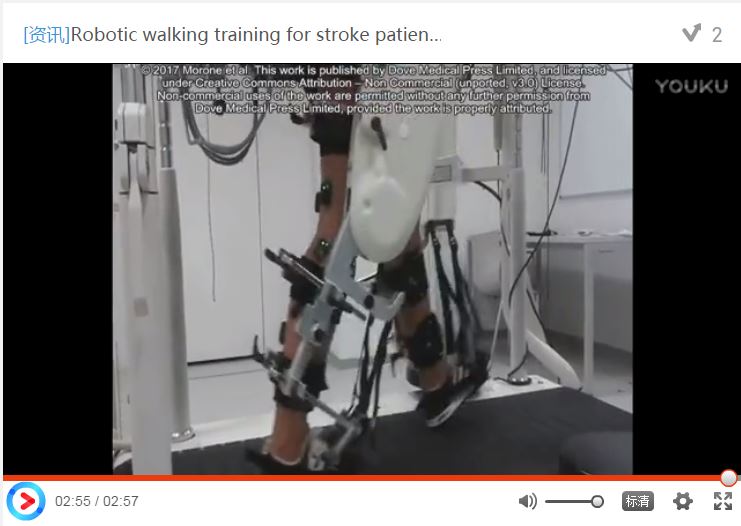9 0 5 7 8
论文已发表
注册即可获取德孚的最新动态
IF 收录期刊
- 2.6 Breast Cancer (Dove Med Press)
- 3.9 Clin Epidemiol
- 3.3 Cancer Manag Res
- 3.9 Infect Drug Resist
- 3.6 Clin Interv Aging
- 4.8 Drug Des Dev Ther
- 2.8 Int J Chronic Obstr
- 8.0 Int J Nanomed
- 2.3 Int J Women's Health
- 3.2 Neuropsych Dis Treat
- 4.0 OncoTargets Ther
- 2.2 Patient Prefer Adher
- 2.8 Ther Clin Risk Manag
- 2.7 J Pain Res
- 3.3 Diabet Metab Synd Ob
- 4.3 Psychol Res Behav Ma
- 3.4 Nat Sci Sleep
- 1.9 Pharmgenomics Pers Med
- 3.5 Risk Manag Healthc Policy
- 4.5 J Inflamm Res
- 2.3 Int J Gen Med
- 4.1 J Hepatocell Carcinoma
- 3.2 J Asthma Allergy
- 2.3 Clin Cosmet Investig Dermatol
- 3.3 J Multidiscip Healthc

Robot-assisted gait training for stroke patients: current state of the art and perspectives of robotics
Authors Morone G, Paolucci S, Cherubini A, De Angelis D, Venturiero V, Coiro P, Iosa M
Received 9 March 2017
Accepted for publication 11 April 2017
Published 15 May 2017 Volume 2017:13 Pages 1303—1311
DOI https://doi.org/10.2147/NDT.S114102
Checked for plagiarism Yes
Review by Single-blind
Peer reviewers approved by Prof. Dr. Roumen Kirov
Peer reviewer comments 2
Editor who approved publication: Dr Roger Pinder
Abstract: In this review, we give a brief outline of robot-mediated gait training
for stroke patients, as an important emerging field in rehabilitation.
Technological innovations are allowing rehabilitation to move toward more
integrated processes, with improved efficiency and less long-term impairments.
In particular, robot-mediated neurorehabilitation is a rapidly advancing field,
which uses robotic systems to define new methods for treating neurological
injuries, especially stroke. The use of robots in gait training can enhance
rehabilitation, but it needs to be used according to well-defined
neuroscientific principles. The
field of robot-mediated neurorehabilitation brings challenges to both
bioengineering and clinical practice. This article reviews the state of the art
(including commercially available systems) and perspectives of robotics in
poststroke rehabilitation for walking recovery. A critical revision, including
the problems at stake regarding robotic clinical use, is also presented.
Keywords: exoskeleton,
neurorehabilitation, robot-assisted walking training, wearable robot,
activities of daily living, motor learning, plasticity
摘要视频链接:Robotic walking training for
stroke patients
